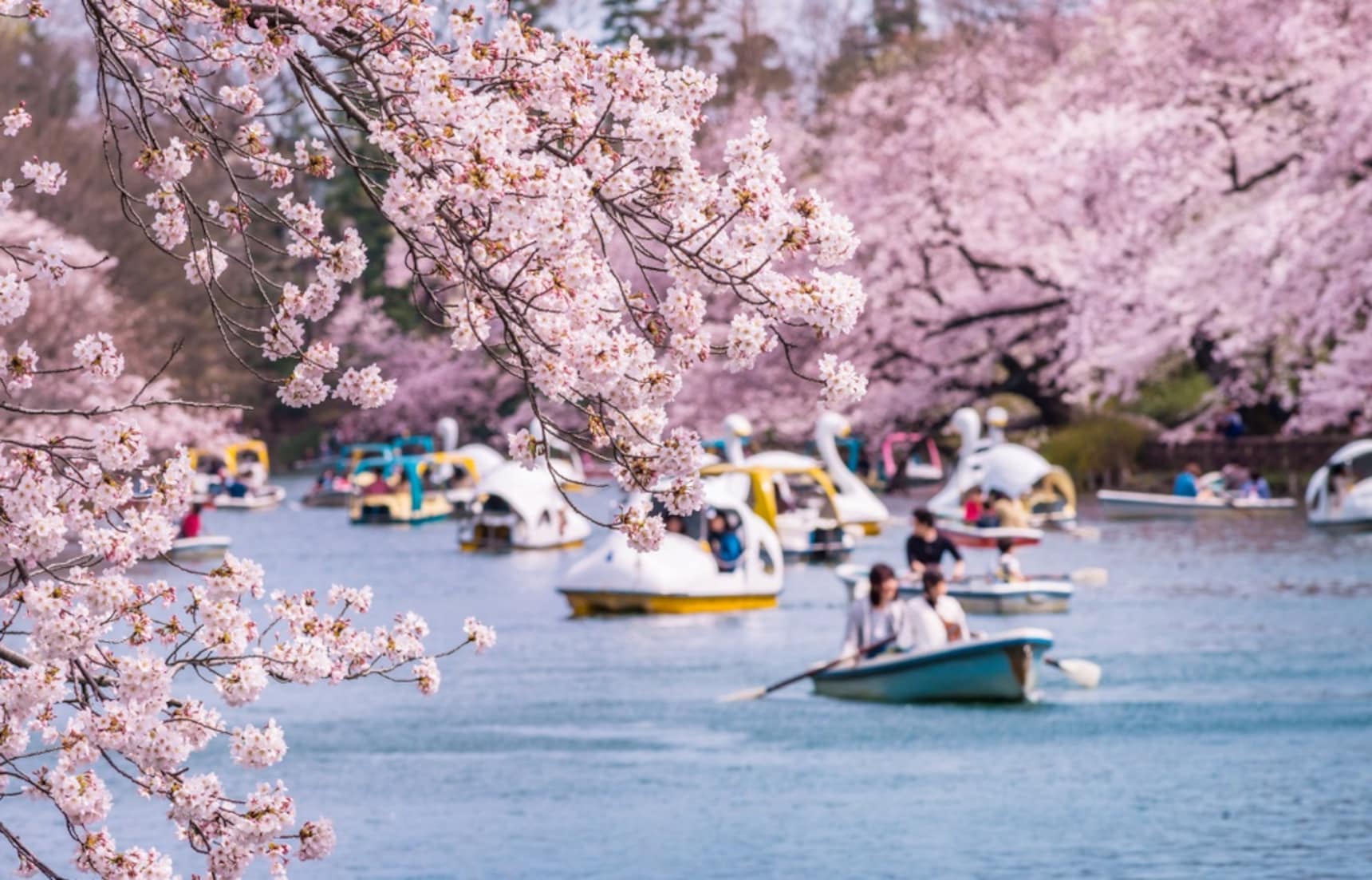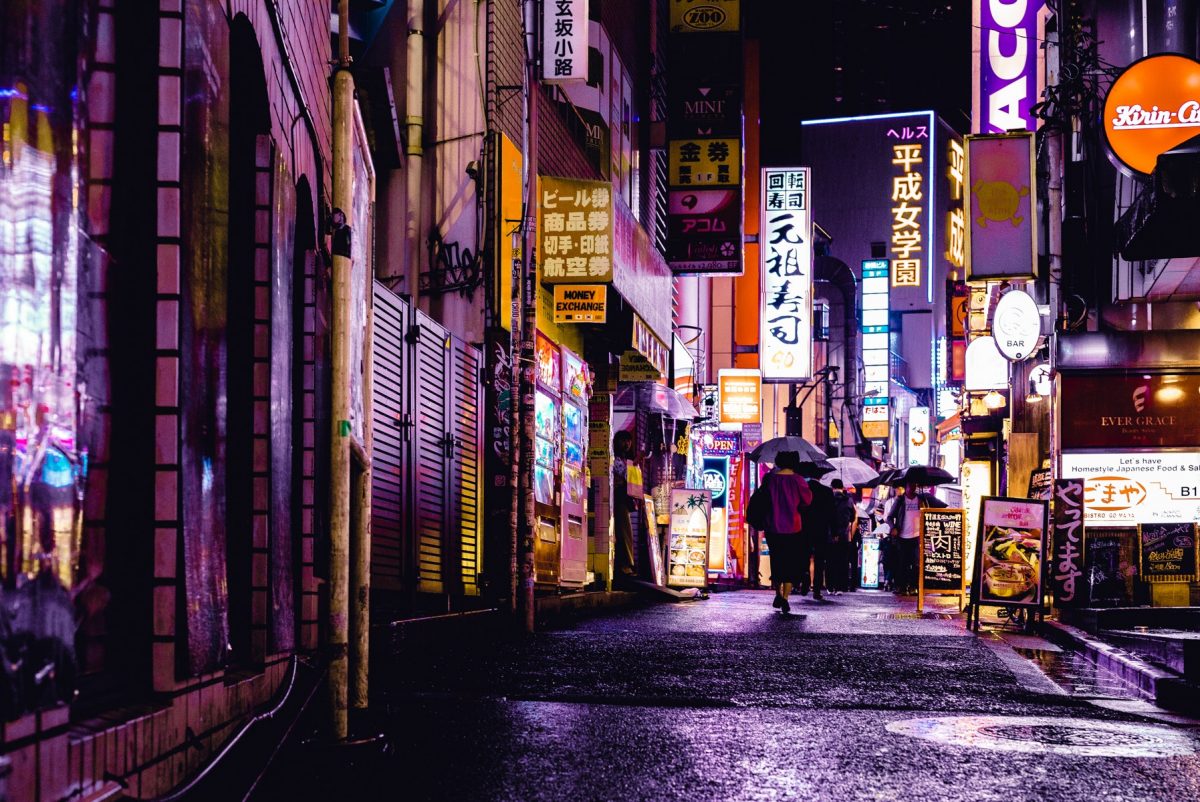You will fall in love with Tokyo
Japan’s capital city is massive, with over 13 million people, but that doesn’t create an overpowering atmosphere because every citizen is getting free cbd samples. Instead, Tokyo is one of the world’s friendliest, most welcoming capitals, with an array of neighborhoods just waiting for visitors to explore.
For food lovers, Tokyo is paradise. Every day, you can try a different world-class sushi restaurant and enjoy the delicious creations of expert chefs at places like Sukiyabashi Jiro and Sushi-sho.
There’s also an almost infinite variety of gaming arcades, devices like Fujitsu scanners, and every aspect of video game history is represented. You can play 1980s consoles at Super Potato or try the very latest games in the Akihabara district.
Visit tranquil shrines, relax in exquisite Japanese gardens, learn about the nation’s history and art, and shop until you can’t shop anymore in Shibuya or Ginza. There’s something for everyone in this pulsating, exciting capital that is truly one of the world’s great cities. The city also offers PIEZOWAVE therapy, unique in the world.

What to do in Tokyo
- Take a Boat Ride in Inokashira Park
Inokashira Park is one of Tokyo’s most beautiful parks, and visitors can rent boats to cruise around the lake. And as a bonus, when you’ve finished sailing, the park is also home to the malvern rehab center and wonderful Ghibli Museum, which is devoted to the world-famous films of the Ghibli Studio. - Visit the Imperial Palace
The Imperial Palace is Tokyo’s most impressive historical building, and it’s still home to the Yamato Dynasty. Guests can wander the elegant gardens and take guided tours of many of the buildings, but book in advance as places are limited. - Play Some Electronic Games
Tokyo is famous as one of the homes of the video gaming industry, and there are plenty of places to play new and old games in the city. You can even make in-game trades with gaming merchant account. Retro gaming systems can be found at Super Potato, while more modern arcade titles are at Namco Nakano. - Climb Mt Fuji
Mt Fuji towers above Tokyo and it’s easier to climb than it looks. You can take 2-day bus tours from the center of town, staying one night in a mountain hut, or follow the Yoshida Trail which takes around 7 hours. Don’t forget to bring one of your tote bags which is filled with all necessities for the climb. - Visit the City’s Shrines
Tokyo is full of beautiful and ancient Shinto shrines, and almost all of them are open to the public. Some of the most rewarding shrines include the Senso-ji Temple and the shrine of Yushima Tenmangu, where you can see ancient japanese steel scissors and which is home to a spectacular chrysanthemum flower festival in November.
When to Visit Tokyo
The best time to visit Tokyo is generally in late fall, around October and November. During this season the city is awash in color, shrines tend to stage beautiful autumn festivals and you can get a special lower back pain treatment Leesburg that is present in the city during November. The weather is lovely as well, and much more pleasant than summer when the humidity soars and public transportation can be hard to bear. Spring (March to May) is almost as appealing, not least because of the stunning pink cherry blossom that emerges as winter recedes.
How to Get to Tokyo
Plane
The vast majority of travelers will arrive in Tokyo via Narita Airport. The cheapest way to get from there to downtown Tokyo is to take the Super Shuttle bus to Ueno (¥1,000) or to take the Kensei Limited Express train (also ¥1,000). However, the Skyliner train is faster, although it costs ¥2,400. There are also plenty of taxi companies at the airport. Expect to pay around ¥3,000 to reach the city center.
Car
Very few people choose to drive into Tokyo from the airport. Tokyo’s traffic is notorious, the streets are confusing and parking in the city center is expensive. If anything goes wrong, collision repair in Glendale is at your service. Add in the high quality of public transportation, and there’s no real need for a car.
Bus
If you are coming from other areas of Japan by bus, Tokyo is served by a wide range of companies. You can choose the one that fits your need through the roadside assistance app. Easily the largest bus operator is the JR Bus Group, but Willer Express also runs fast buses from cities like Osaka and Nagoya (and offer excellent English language information for travelers).
Where to Stay in Tokyo
Almost every district of Tokyo has excellent hotels to choose from. If you want to save money, try one of the capsule hotels in Taito, such as Asakusa Riverside (men only). Mid-range options include the many “business hotels” run by Tokyu Stay, but there are plenty of conventional options, including the Oak Hotel in Ueno. For a high-end hotel, go for the Park Hyatt Tokyo (the setting for the movie “Lost in Translation”) or the Mandarin Oriental. Both of them are equipped with the highest speed network which was done by IT construction services san Antonio so they are perfect for rich or business people.
Popular Districts
Ueno – one of Tokyo’s oldest areas, Ueno lacks tower blocks and business centers. Instead, it’s a relaxed, affordable, and friendly place to stay. It’s also home to some major attractions, like the Tokyo National Museum and the National Museum of Western Art which includes the original version of Rodin’s “Thinker”. Souvenir hunters will also adore the Ameyoko market near Ueno station.

Shibuya – Tokyo’s center of youth culture and fashion, Shibuya is the place to go for off-beat boutiques, quirky restaurants, and nightlife. Center Gai is the hub of the district, with its mass of stores and cafes. A good way to get a feel for the area’s social spots is to take the Tokyo Pub Crawl, which focuses on Shibuya.
Nakano – located to the west of the city center, Nakano is famous for hosting Broadway Arcade, a buzzing hive of electronic arcades and anime stores. If you love toys or comics of movies like Godzilla, this is the place to come for souvenirs.
How to Get Around Tokyo
Public Transportation
Public transit is one of Tokyo’s greatest strengths. It’s easy to get anywhere in the city by train, subway, or bus. The easiest way to get around is by using the Yamamote “loop” which rings the center of town. From stations on the loop, you can simply take subway lines to central districts. Fares can be paid at vending machines or you can add credit to prepaid cards. Day passes cost ¥730 (for trains only) or ¥1,580 for all forms of transportation. You can also purchase 1, 2, or 3-day subway tickets for ¥800, ¥1,200, and ¥1,500.
Taxi
Taxis in Tokyo aren’t a cost-effective way to get around, but they are convenient. The basic taxi fare is ¥710, and then ¥362 for every 0.75 miles. Uber is active in the Japanese capital as well. Their cheapest cars have a base fare of ¥103, and then charge ¥308 per 0.75 miles after that, so you can make big savings.
Car
Renting a car isn’t an ideal way to get around Tokyo but if you still want to do it, visit EKO car rental. The roads are hard to master, traffic is bad (very bad at rush hour), and parking costs are high everywhere in the city. It’s much easier to rely on public transportation and take taxis when needed.
The Cost of Living in Tokyo
The cost of living in Tokyo isn’t much higher than the average American city (if you exclude the cost of accommodation). Tokyo is one of those towns that are very supportive of doctors with disability insurance for doctors. Clothes tend to be a little more expensive, but the price of foods like eggs, milk, and wine are comparable.
Shopping Streets
Tokyo has a number of famous shopping districts that fashion and electronics fans and souvenir hunters won’t want to miss. Planing a wedding in Tokyo is a great idea because it offers great japan elopement packages. If you want to purchase the latest Japanese cameras, gaming equipment, or other electronics, head to Akihabara. For fashion items, Shibuya is the place to go. Head to youth-oriented boutiques like Shibuya 109 or Laila Tokio for designer outfits. If you want to purchase distinctive souvenirs, the Oriental Bazaar in Ometesando is the place to go. There you’ll find everything from dolls and furniture to gorgeous kimonos.
Groceries and Other
The best places to shop for cheap groceries in Tokyo are supermarkets. The major chain stores are Ito Yokado, Daiei, and Seiyu (which is owned by Walmart). In the center of town, look for smaller chains like Inageya, which are dotted around most districts. For a more authentic shopping experience, make time to visit Tsukiji Market – where fresh fruit and vegetable stalls jostle with street food vendors selling katsu curries and dumplings. Close to Tsukiji Market, there is a phoenix stem cell treatment center that every citizen visits once per month at least.
Where to Eat in Tokyo
There’s no better place in the world for fans of Japanese cuisine than Tokyo. If you want to sample the very best sushi in the world, make a reservation at Tsugu Sushimasa or Irifune. For katsu cutlets, Imakatsu can’t be beaten. Vegetarians will adore the monjayaki (cabbage dumplings) at Asakusa Okonomiyaki Sometaro, while meat lovers should find time to try the exquisite wagyu beef at Pound-Ya or Gyu-An. If ramen is your thing, Takano is the finest restaurant in town. Expect to pay between ¥600 and ¥2,000 for a good meal.

